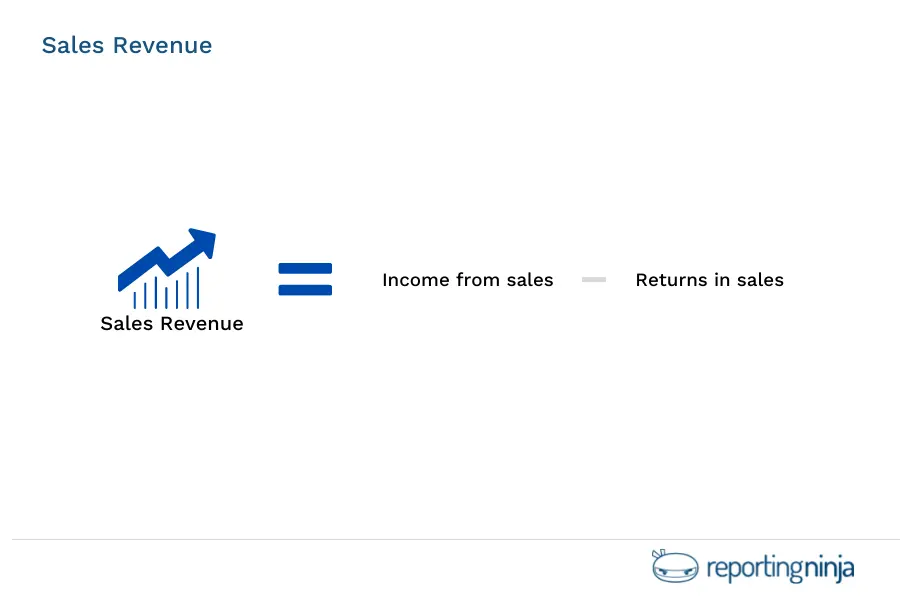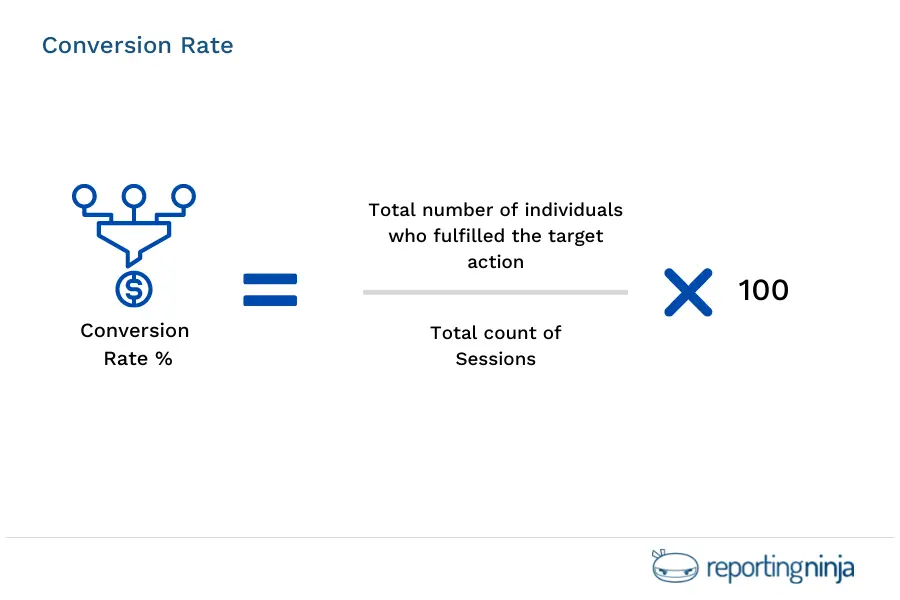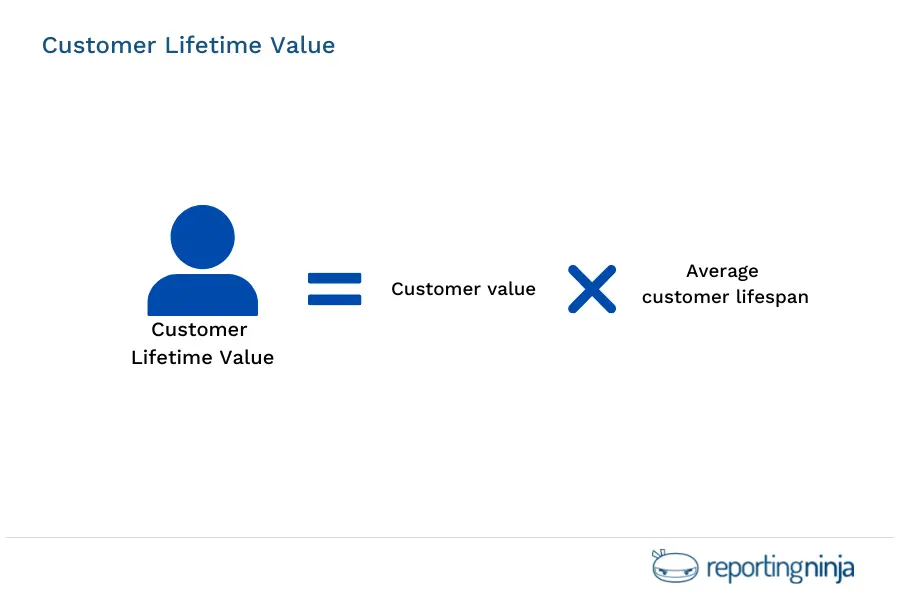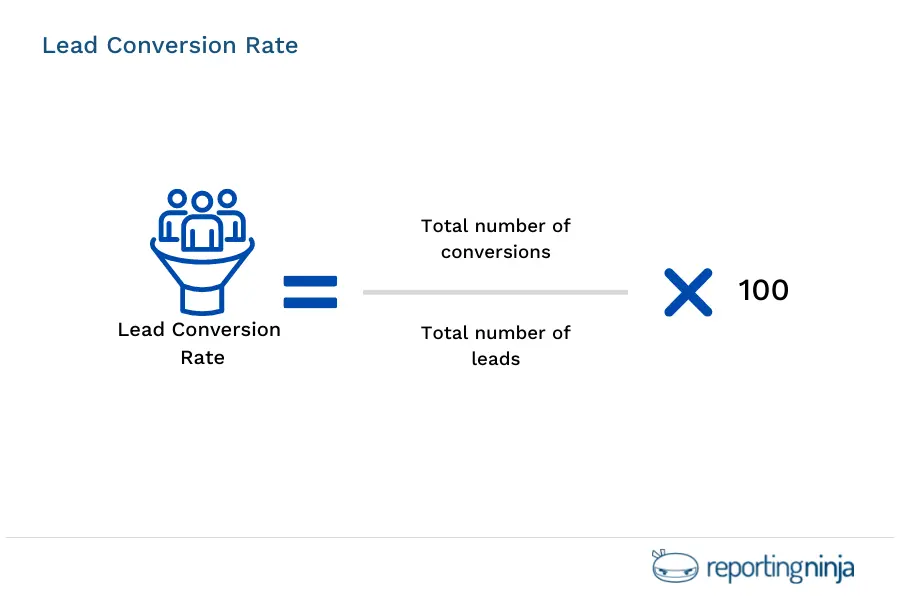Essential operational metrics to track - A complete guide


The fastest way to fail as a digital marketer is to let your instincts lead the way.
"I feel like our PPC campaign was a success."
"I think our SEO is struggling."
These are the types of statements that can get you into trouble with your clients. They're paying you to produce results – not feel out a campaign's success or trust your gut when it comes to their website's ranking.
You need to be able to speak in numbers, not in your opinion.And the way you do that is by tracking operational metrics.
By understanding which data actually matter and how they impact you and your client's business goals, you can make informed decisions that will lead to real, tangible results.
This guide is a deep dive into operational metrics, starting with what they are and why they're so important. Then, we'll go over the different types of operational metrics and how you can use them to improve your marketing strategy.
Operational metrics are quantifiable indicators that help you understand how well business workflows and processes are performing.
Think of them as snapshots. They give you a glimpse into how things are going so that you can make necessary changes and improve your overall performance.
For instance, are you hitting your monthly quota for sales calls? How long does it take you to onboard a new client? Where are most of your website visitors coming from?
These are all examples of operational metrics that can give you a clear idea of how your business is doing and where you need to make changes.
Operational metrics are different from financial metrics, which focus on indicators like revenue and profit. Financial metrics are important, but they don't give you the same level of insight into your business's day-to-day operations.
Operational efficiency metrics, on the other hand, can show you exactly where inefficiencies exist and how you can improve them. This makes them essential for any business that wants to optimize its performance.
Operational metrics provide a factual, unbiased view of the health of any business. This is extremely important for several reasons:
Operational metrics can show you where your business is succeeding and where it's struggling. This insight is essential for making informed decisions about where to allocate resources.
For example, if you see that your website's conversion rate is low, you'll know that you need to invest in improving your website's design and user experience.
On the other hand, if you see that your social media following is growing rapidly, you'll know that you need to invest more time and resources into your social media marketing efforts in order to capitalize on that growth.
Because operational metrics give you a clear idea of where inefficiencies exist, you can address them quickly and properly.
Let's say, for example, that you see from your metrics that it's taking your customer service team too long to resolve customer issues.
This insight will allow you to take steps to improve the efficiency of your customer service process. Perhaps you can invest in a new customer service software or hire more customer service representatives.
Either way, without operational metrics, you'll have no idea why you're losing customers or how to fix the problem.
Avoiding problems is way cheaper than solving them, and it's true for any kind of business or industry.
This is where operational metrics can be extremely helpful. By tracking the right metrics, you can identify potential problems early on and take steps to prevent them.
Let's say, for example, that you see from your website traffic data that you're getting a lot of visitors from a certain country.
If you don't have any customers in that country, that's a potential problem. You're spending money marketing to people who can't even buy your product!Tracking this metric will help you find solutions to problems before they cause too much damage. In our example, that means blocking traffic not just from the country in question but also from any other countries where you don't do business.
Trends refer to changes in your operational metric data over time. Tracking trends is important because it can help you identify both positive and negative patterns in your business.
For example, let's say you see from your website traffic data that you're getting more visitors from organic search than you were a month ago.
That's a positive trend, and it means that your SEO efforts are paying off.
On the other hand, let's say you see from your customer service data that you're getting more complaints than you were a month ago.
That's a negative trend. It tells you that something's wrong in your customer service workflow, whether it's a problem with your customer service software or your team's training.
In either case, operational metrics are essential for uncovering these trends so that you can take action accordingly.
Operational metrics can give you insights into literally every aspect of your business, often focused on the following:

Operational metrics can give you all of this information and more. But, best of all, it doesn't involve trusting your gut in any way – it's all based on hard data.
Operational metrics and strategic KPIs are connected, but they measure entirely different things. Here are the key differences between a strategic KPI vs. operational metrics:
Operational metrics are usually specific to departments or teams. On the other hand, strategic KPIs are usually company-wide. For example, website traffic is an operational metric for the marketing team, while total revenue is a strategic KPI for the entire company.
Operational metrics are generally measured in real-time or near-real-time. Strategic KPIs are usually measured on a monthly, quarterly, or annual basis.Why? Because operational metrics are used to manage day-to-day operations, while strategic KPIs are used to measure long-term progress.
The goal of operational metrics is to optimize specific processes. The goal of strategic KPIs is to help you achieve your company's overall mission and goals.
To put it another way, operational metrics help you do your job better, while strategic KPIs help you achieve your company's vision.
Operational metrics usually come from transaction data, such as sales data, customer service data, manufacturing data, etc. Strategic KPIs often come from surveys, interviews, focus groups, and other qualitative data sources.
Operational metrics are usually quantitative, aka "hard" data. Strategic KPIs are usually qualitative, aka "soft" data, but they can also be quantitative.
For example, customer satisfaction is a strategic KPI that's usually measured qualitatively (via surveys) but can also be measured quantitatively (via Net Promoter Score).
On the other hand, an operational metric like conversion rate is always quantitative since it's based on transaction data.
In a nutshell, operational metrics show you what's happening right now, while strategic KPIs look at the future and how you can get there.
There are countless operational metrics a company can track, but not all of them are equally important.In fact, tracking the wrong operational metrics can actually be harmful to your business. That's because it can lead to "vanity metrics" – metrics that look good on paper but don't actually mean anything.
To avoid this, you need to focus on operational metrics that are actionable and relevant to your business.
The following are some of the best metrics to track from an operational viewpoint:
This bottom-line metric is one of the crucial operational metrics for any business. Sales revenue tells you how much money your company is making from sales, and it's the foundation of all other operational metrics.To calculate sales revenue, simply subtract returns from income.

Gross profit margin is related to sales revenue, but it tells you a different story. This metric for operations managers measures how much money your company makes after subtracting the cost of goods sold (COGS).
In other words, it shows you how much profit your company is making on each sale.Calculating this metric involves dividing gross profit (sales revenue – COGS) by sales revenue, then multiplying the result by 100.
This metric is also linked to sales revenue, but it measures something different: after-tax profit. In other words, it tells you how much money your company has left after paying all expenses, including taxes.To calculate net profit margin, subtract all expenses (including taxes) from revenue.

Website traffic tells you how many people are visiting your website, and it's a good indicator of overall interest in your company and how your website is doing.You can also segment website traffic into other valuable operational metrics. For example, brand traffic (visitors who find your website via a branded search term) can give you an idea of how well your website is ranking for your brand name.
You can use tools like Google Analytics and Google Search Console to track website traffic.
Your website's conversion rate reveals how effective your website is at converting visitors into leads or customers.
To calculate the conversion rate, divide the number of conversions by the total number of visitors, then multiply the result by 100.

For example, if your website gets 1,000 visitors and 10 of them buy something, your conversion rate would be 1%.
Customer acquisition cost (CAC) is an operational metric that quantifies how much it costs to acquire a new customer.
It's a key metric because it tells you which channels and strategies are working and which ones you're just wasting money on.

Cost per click (CPC) is an operational metric related to paid advertising. CPC measures exactly how much money you're spending on every click you get from Facebook, Google, or other advertising channels.
You can use CPC to calculate your return on investment (ROI) from paid advertising, and it's a good metric to track even if you're not doing paid advertising.
To calculate CPC, divide your total ad spend by the number of clicks your ad received.
Customer lifetime value (CLV) is a critical operational metric because it shows you how much each customer is worth to your business.
Without this information, it's impossible to know if you're making or losing money on each customer.

Are you losing more customers than you're gaining? Customer retention rates will tell you.
This operational metric offers you hard data about customer satisfaction. If customers are leaving your company, it's a sign that they're not happy with what you're offering.
There are a few different ways to calculate customer retention rate, but the most common is to take the number of customers at the end of a period and divide it by the number of customers at the beginning of that period.

For example, if you had 100 customers at the beginning of the year and 90 at the end of the year, your customer retention rate would be 90%.
How many of your website visitors are new, and how many are returning? This operational metric can give you valuable insights into customer behavior.
If most of your visitors are new, it could mean that you're not doing a good job of keeping customers engaged. On the other hand, if most of your visitors are returning, it could mean that you're doing a good job of customer retention.
Tracking this operational metric can be done in several ways. For instance, you could look at the number of unique visitors to your website over a period of time. Or, you could look at the percentage of new versus returning visitors.
A lead is a person who has shown interest in your product or service by providing contact information, such as an email address.
A lead conversion rate is the number of those interested people that you've converted into customers.

This is a critical metric. After all, what's the point of generating leads if you're not going to convert them into customers?
It's easy to calculate your lead conversion rate. Just take the number of leads you've converted and divide it by the total number of leads you have.
Unlike the other operational metrics on this list, the lead to opportunity ratio is not as common. However, it can be a useful metric, especially for businesses that generate a lot of leads.
What this measures is how many of your leads turn into opportunities. An opportunity is a lead that has the potential to become a customer.

For example, if you generated 1,000 leads last month and 10% of them turned into opportunities, your lead to opportunity ratio would be 10%.
Meaningfully Active User or MAU is another uncommon but potentially useful operational metric.
MAU tells you how many users are taking meaningful actions, aka actions that are most likely to generate value for your business.
You can then use this number to improve other metrics like customer lifetime value or customer retention rate.
In GA4 - the metric ‘active user’ can be a useful determinant of MAU.
Tracking, analyzing, and extracting insights from relevant operational metrics can help you make strategic business decisions.
It goes beyond profit, too – understanding and utilizing operational metrics can help you improve customer happiness, employee satisfaction, and a whole lot more.
Reporting Ninja's analytics report templates simplifies the entire process.
After linking your data sources (e.g., Google Analytics), you can visualize them in Looker Studio's operational metrics dashboard, build beautiful reports in minutes, and use other powerful analytics features to further manipulate your data and glean valuable insights.
Try it today! Sign up for a free 15-day trial of Reporting Ninja and start using it within the hour – no commitments and no credit card required.
Sign up for a 15 days free trial. No credit card required.
